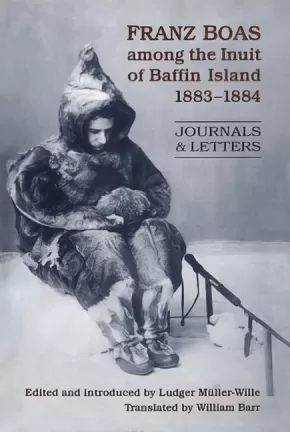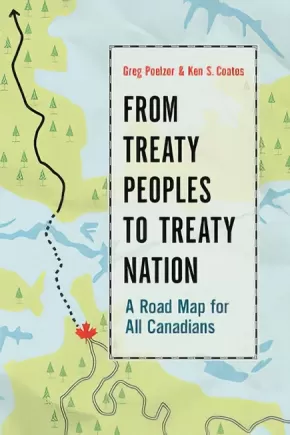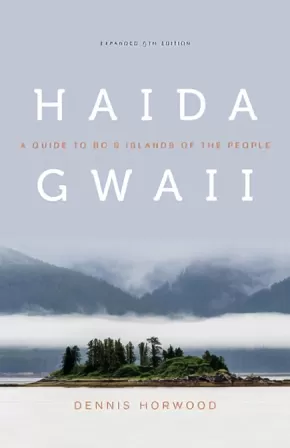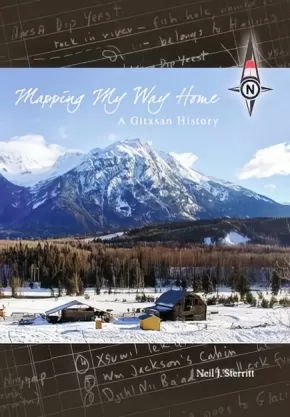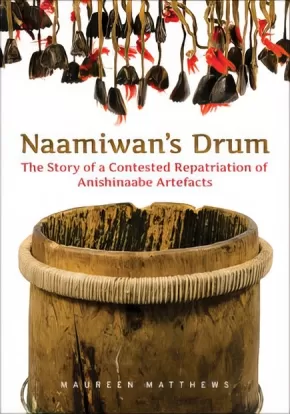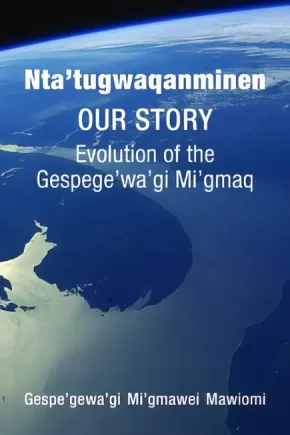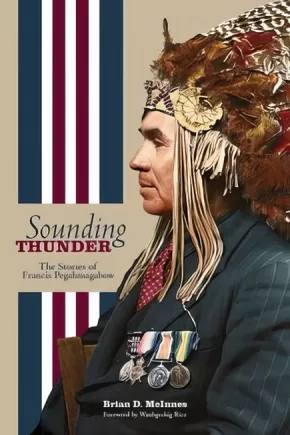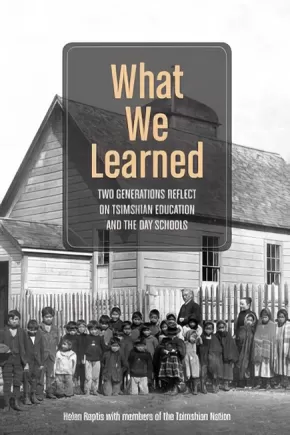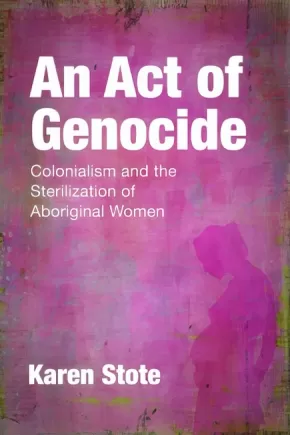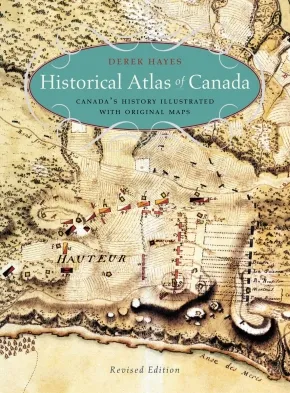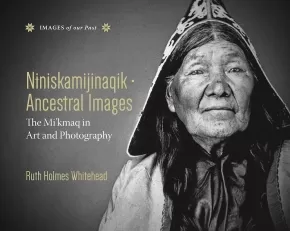History
Synopsis:
In the summer of 1883, Franz Boas, widely regarded as one of the fathers of Inuit anthropology, sailed from Germany to Baffin Island to spend a year among the Inuit of Cumberland Sound. This was his introduction to the Arctic and to anthropological fieldwork. This book presents, for the first time, his letters and journal entries from the year that he spent among the Inuit, providing not only an insightful background to his numerous scientific articles about Inuit culture, but a comprehensive and engaging narrative as well.
Using a Scottish whaling station as his base, Boas travelled widely with the Inuit, learning their language, living in their tents and snow houses, sharing their food, and experiencing their joys and sorrows. At the same time he was taking detailed notes and surveying and mapping the landscape and coastline. Ludger Müller-Wille has transcribed his journals and his letters to his parents and fiancé and woven these texts into a sequential narrative. The result is a fascinating study of one of the earliest and most successful examples of participatory observation among the Inuit. Originally published in German in 1994, the text has been translated into English by William Barr, who has also published translations of other important works on the history of the Arctic.
Illustrated with some of Boas's own photos and with maps of his field area, Franz Boas among the Inuit of Baffin Island, 1883-1884 is a valuable addition to the historical and anthropological literature on southern Baffin Island.
Synopsis:
Canada is a country founded on relationships and agreements between Indigenous people and newcomers. Although recent court cases have strengthened Aboriginal rights, the cooperative spirit of the treaties is being lost as Canadians engage in endless arguments about First Nations “issues.” Greg Poelzer and Ken Coates breathe new life into these debates by looking at approaches that have failed and succeeded in the past and offering all Canadians – from policy makers to concerned citizens – realistic steps forward. The road ahead is clear: if all Canadians take up their responsibilities as treaty peoples, Canada will become a leader among treaty nations.
Reviews
What is clear from this survey is that no consensus exists around how to improve Aboriginal and non-Aboriginal relations. This sketch by Poelzer and Coates does, however, do more than provide the reader with a useful review of proposals aimed at solving the “Indian problem” in Canada; it allows the authors to situate their own approach within a very complex debate characterised by a diversity of opinions (both within the Aboriginal and non-Aboriginal intellectual communities). From Treaty Peoples to Treaty Nation’s originality flows from its focus on the practical elements of these problems. By contrast, most other scholars’ approaches are philosophical, idealistic, and theoretical … With the Truth and Reconciliation Commission of Canada’s release of its Final Report earlier this year, Poelzer and Coates’ work could not be timelier. — Darius Bossé, Saskatchewan Law Review, January 2016
"The greatest value of this volume [is that] it seeks to force productive debate, not fruitless fingerpointing and rancor. Whether or not it succeeds in doing so for Canada remains to be seen. Whether the United States, including the many indigenous peoples in the Great Plains, takes notice and begins more meaningful discussions of Americans as “Treaty Peoples” and a “Treaty Nation” likewise remains unclear. As a region with strong indigenous history and presence, these are debates worth having — on both sides of the border." — Brenden W. Rensink, Charles Redd Center for Western Studies Brigham Young University, Great Plains Research, October 2016
"The book provides an excellent summary of the work of various Canadian Indigenous political scholars such as Kiera Ladner, Bonita Beaty, Dan Russell, John Borrows and Glenn Coulthard. The treaty theme runs throughout the book, with historical and contemporary examples. This allows the reader to understand the past but also facilitates awareness of the modern-day treaty process that is underway in some parts of Canada.— Cora Voyageur, professor of sociology at the University of Calgary, and member of the Athabasca Chipewyan First Nation, Alberta Views, Vol. 19 No. 10, December 2016
Additional Information
366 pages | 6.00" x 9.00"
Synopsis:
Haida Gwaii, ancestral home of the Haida First Nation, was once as inaccessible and mysterious as it was beautiful. The tight cluster of islands off British Columbia’s northwest coast remained virtually untouchable for millennia, allowing its people to develop a distinct and exceptional cultural identity that was known and revered across the region. Today, Haida Gwaii—a name that means “islands of the people” in the Haida language—has piqued the interest of world travellers. Its magnificent beaches, unique flora and fauna, and world heritage sites have earned international acclaim. Gwaii Haanas National Park in the southern region of the archipelago was named “Best National Park in North America” by National Geographic Traveler.
In Haida Gwaii: Islands of the People, the newly updated edition of his bestselling guidebook, Dennis Horwood applies his in-depth knowledge of the islands’ geography, social history, and natural and cultural attractions to equip travellers with everything they need to know about visiting these glorious gems of the Pacific. This indispensible guide includes maps, regional histories, accommodation listings, sample itineraries, wildlife descriptions, recreation tips, and sixteen pages of colour photos.
Synopsis:
The stories in this book relate the traditional tales which Mr. James Wallas has learned from his elders, who lived in Quatsino Sound and on Hope Island. Mr. Wallas's forefathers are members of a people known generally as the Kwakiutl, although the term is misleading because it originally referred to a sub-group living at Fort Rupert. The Kwakiutl inhabit an area which at present includes Campbell River at the southern extreme, Quatsino Sound at the western extreme, various inlets of mainland B.C. at the eastern extreme, and Smiths Inlet at the northern extreme. Traditionally, the Kwakiutl lived in villages located in this general area (excluding Campbell River an Cape Mudge) which were organized into tribes. Today, most of them live on reserves near towns, maintaining some remote villages for food preparation and preserving during the spring, summer and fall.
Additional Information
216 pages | 5.50" x 8.50" | 11 Colour Line Drawings
Synopsis:
Today the adjacent villages of Gitanmaax and Hazelton form one of the most picturesque communities in all of western Canada—a tiny, tourism mecca nestled in Gitxsan territory at the foot of an iconic mountain in the heart of the Skeena watershed. But 150 years ago these neighbouring villages were the economic hub of the north when packers, traders, explorers, miners, surveyors and hundreds of tons of freight passed through from Port Essington on the coast east to the Omineca gold fields, from Quesnel north to Telegraph Creek.
Mapping My Way Home traces the journeys of the European explorers and adventurers who came to take advantage of the opportunities that converged at the junction of the Skeena and Bulkley rivers. The author, Gitsxan leader Neil Sterritt, also shares the stories of his people, stories both ancient and recent, to illustrate their resilience when faced with the challenges the newcomers brought.
And finally he shares his own journey from the wooden sidewalks of 1940s Hazelton to the world of international mining and back again to the Gitxsan ancestral village of Temlaham where he helped his people fight for what had always been theirs in the ground-breaking Delgamuukw court case.
It’s British Columbia history, local history, family history and Gitxsan history. The book also includes a chapter on the history of BC’s land issues and a detailed description of Neil’s involvement in the Delgamuukw court case.
Additional Information
384 pages | 7.00" x 10.00"
Synopsis:
Naamiwan’s Drum follows the story of a famous Ojibwe medicine man, his gifted grandson, and remarkable water drum. This drum, and forty other artefacts, were given away by a Canadian museum to an American Anishinaabe group that had no family or community connections to the collection. Many years passed before the drum was returned to the family and only of the artefacts were ever returned to the museum.
Maureen Matthews takes us through this astonishing set of events from multiple perspectives, exploring community and museum viewpoints, visiting the ceremonial group leader in Wisconsin, and finally looking back from the point of view of the drum. The book contains a powerful Anishinaabe interpretive perspective on repatriation and on anthropology itself. Containing fourteen beautiful colour illustrations, Naamiwan’s Drum is a compelling account of repatriation as well as a cautionary tale for museum professionals.
Synopsis:
Nta’tugwaqanminen provides evidence that the Mi’gmaq of the Gespe’gewa’gi (Northern New Brunswick and the Gaspé Peninsula) have occupied their territory since time immemorial. They were the sole occupants of it prior to European settlement and occupied it on a continuous basis. This book was written through an alliance between the Mi’gmaq of Northern Gespe’gewa’gi (Gaspé Peninsula), their Elders and a group of eminent researchers in the field with the aim of reclaiming their history, both oral and written, in the context of what is known as knowledge re-appropriation. It also provides non-Aboriginal peoples with a view of how Mi’gmaq history looks when it is written from an Indigenous perspective.
There are two voices in the book — that of the Mi’gmaq of the Gespe’gewa’gi, including the Elders, as they act as narrators of the collective history, and that of the researchers, who studied all possible aspects of this history, including advanced investigation on place names as indicators of migration patterns.
Nta’tugwaqanminen speaks of the Gespe’gewa’gi Mi’gmaq vision, history, relation to the land, past and present occupation of the territory and their place names and what they reveal in terms of ancient territorial occupation. It speaks of the treaties they agreed to with the British Crown, the respect of these treaties on the part of the Mi’gmaq people and the disrespect of them from the various levels of governments. This book speaks about the dispossession the Mi’gmaq of Gespe’gewa’gi had to endure while the European settlers illegally occupied and developed the Gaspé Peninsula to their own advantage and the rights and titles the Mi’gmaq people still have on their lands.
Author Note: The Gespe’gewa’gi Mi’gmawei Mawiomi is the organization that represents the three communities of the northern part of Gespe’gewa’gi. Research associates Richard Jeannotte and Donald Jeannotte, both Gespe’gewa’gi Mi’gmaqs, and Danielle E. Cyr, senior scholar at York University, wrote the seven first chapters. Troy Jerome, current Mi’gmawei Mawiomi Secretariat Executive Director / Nutewistoq wrote Chapter 8.
This book would be useful for courses in social studies, history, and English language arts. Recommended for grades 8-12, as well as college/university courses.
Foreword by Satsun (Herb George)
Introduction: How We Came to Write Nta’tugwaqanminen
Our Territory in Prehistoric Times
Our Place Names
Our Creation Story and Fundamental Myths
Our Historical Presence in Gespe’gewa’gi
The Treaty Relationship Between Mi’gmaq of Gespe’gewa’gi and the British Crown
Good Faith and Dispossession
Our Constitutional Rights as Gespe’gewa’gi Mi’gmaq
The Gespe’gewa’gi Mi’gmaq in Contemporary Times
Conclusion: Our Story Continues
Notes
Bibliography
Index
320 pages | 6.00" x 9.00"
Synopsis:
Separate Beds is the shocking story of Canada’s system of segregated health care. Operated by the same bureaucracy that was expanding health care opportunities for most Canadians, the “Indian Hospitals” were underfunded, understaffed, overcrowded, and rife with coercion and medical experimentation. Established to keep the Aboriginal tuberculosis population isolated, they became a means of ensuring that other Canadians need not share access to modern hospitals with Aboriginal patients.
Tracing the history of the system from its fragmentary origins to its gradual collapse, Maureen K. Lux describes the arbitrary and contradictory policies that governed the “Indian Hospitals,” the experiences of patients and staff, and the vital grassroots activism that pressed the federal government to acknowledge its treaty obligations.
A disturbing look at the dark side of the liberal welfare state, Separate Beds reveals a history of racism and negligence in health care for Canada’s First Nations that should never be forgotten.
Awards
- 2017 Aboriginal History Book Prize awarded by the Canadian Historical Association winner
- 2017 Jason A. Hannah Medal awarded by The Royal Society of Canada winn
Reviews
"In painstaking research and matter-of-fact reportage, Associate Professor Lux of Brock University documents Canadian apartheid. Separate Beds: A History of Indian Hospitals In Canada is a riveting and extraordinary account of mistreatment of citizens." — Tom Korski, Blacklocks Reporter, Saturday, June 4, 2016
‘Lux’s detailed account will surely be of interest to scholars of Aboriginal history and health care as well as to the people interested in the development of Indian hospitals in Canada.’ — Joanne DeCosse, Canada’s History October-November 2016
‘This is a must read for anyone interested in the history of Canadian Healthcare, Aboriginal health and treaty rights.’ — Velvet Maud, The Canadian Journal of Native Studies vol 36:02:2016
Additional Information
288 pages | 6.00" x 8.98" | Paperback
Synopsis:
Francis Pegahmagabow (1889–1952), a member of the Ojibwe nation, was born in Shawanaga, Ontario. Enlisting at the onset of the First World War, he became the most decorated Canadian Indigenous soldier for bravery and the most accomplished sniper in North American military history. After the war, Pegahmagabow settled in Wasauksing, Ontario. He served his community as both chief and councillor and belonged to the Brotherhood of Canadian Indians, an early national Indigenous political organization. Francis proudly served a term as Supreme Chief of the National Indian Government, retiring from office in 1950.
Francis Pegahmagabow’s stories describe many parts of his life and are characterized by classic Ojibwe narrative. They reveal aspects of Francis’s Anishinaabe life and worldview. Interceding chapters by Brian McInnes provide valuable cultural, spiritual, linguistic, and historic insights that give a greater context and application for Francis’s words and world. Presented in their original Ojibwe as well as in English translation, the stories also reveal a rich and evocative relationship to the lands and waters of Georgian Bay.
In Sounding Thunder, Brian McInnes provides new perspective on Pegahmagabow and his experience through a unique synthesis of Ojibwe oral history, historical record, and Pegahmagabow family stories.
Awards
- Fred Landon Award, Ontario Historical Society (2018)
- American Book Award, Before Columbus Foundation (2017)
“Debwemigad Nimkiig gaye Aadizookanag zhawenimaawaad. Brian McInnes has clearly been blessed by the Thunders and Great Storytellers. With Sounding Thunder he has achieved the perfect balance of personal memoir and scholarly inquiry. He shares with readers the stories that have connected one generation to another and in these cycles we find the truth about living. Dibaajimowinan omaada’oozhinang mii igo aanikoobijige.” – Margaret Ann Noodin, Assistant Professor, Department of English, University of Wisconsin
“Sounding Thunder is invaluable for those working in biographical, historical, Indigenous, military and political studies and the general reader. McInnes skillfully contextualizes his subject as one of Canada’s greatest war heroes as well as a member of his family, community, and Anishinaabe people.” – Brock Pitawanakwat, Assistant Professor, Department of Indigenous Studies, University of Sudbury
“Brian McInnes’ book is both elegant and masterful in its weaving of language, spirituality, storytelling, family, community, and physical place on the lands and waters of Georgian Bay as he presents the world and life of his great-grandfather, Francis Pegahmagabow. McInnes’ presentation of family stories in both Ojibwe and English, and his placement of them within their historical and geographical context, underlines Waubgeshig Rice’s claim in his foreword to Sounding Thunder that the book will remain ‘a vital resource for generations to come.’” – Jurors, Fred Landon Award, Ontario Historical Society
This book would be useful for social studies and history courses for students in grades 11 and 12 or at a college/university level.
240 pages | 6.00" x 9.00" | 31 b&w illustrations | 5 b&w tables | bibliography
Synopsis:
The legacy of residential schools has haunted Canadians, yet little is known about the day and public schools where most Indigenous children were sent to be educated. In What We Learned, two generations of Tsimshian students – elders born in the 1930s and 1940s and middle-aged adults born in the 1950s and 1960s – add their recollections of attending day schools in northwestern British Columbia to contemporary discussions of Indigenous schooling in Canada. Their stories also invite readers to consider traditional Indigenous views of education that conceive of learning as a lifelong experience that takes place across multiple contexts.
Reviews
"Helen Raptis has written an important book about Tsimshian educational history. It is also a book about building research relationships with Indigenous communities. It is a work that recognizes, implicitly, that Indigenous history does not run in a straight line but is more liquid and circular. The journey to understand the Indigenous past requires deft canoe navigation through riptides and crosscurrents, past colonization’s half-submerged debris. Landing on the beach, one discovers no conventional separation between past, present, and future. There are only the stories—the stories and the sacred landscape." — Michael Marker, University of British Columbia, History of Education Quarterly, Vol. 57 No. 1, February 2017
Educator Information
Helen Raptis is an associate professor in the Faculty of Education at the University of Victoria. The members of the Tsimshian Nation are Mildred Roberts, Wally Miller, Sam Lockerby, Verna Inkster, Clifford Bolton, Harvey Wing, Charlotte Guno, Don Roberts Junior, Steve Roberts, Richard Roberts, Carol Sam, and Jim Roberts
Additional Information
224 pages | 6.00" x 9.00" | Paperback
Synopsis:
An in-depth investigation of the forced sterilization of Aboriginal women carried out by the Canadian government.
During the 1900s eugenics gained favour as a means of controlling the birth rate among “undesirable” populations in Canada. Though many people were targeted, the coercive sterilization of one group has gone largely unnoticed. An Act of Genocide unpacks long-buried archival evidence to begin documenting the forced sterilization of Aboriginal women in Canada. Grounding this evidence within the context of colonialism, the oppression of women and the denial of Indigenous sovereignty, Karen Stote argues that this coercive sterilization must be considered in relation to the larger goals of Indian policy — to gain access to Indigenous lands and resources while reducing the numbers of those to whom the federal government has obligations. Stote also contends that, in accordance with the original meaning of the term, this sterilization should be understood as an act of genocide, and she explores the ways Canada has managed to avoid this charge. This lucid, engaging book explicitly challenges Canadians to take up their responsibilities as treaty partners, to reconsider their history and to hold their government to account for its treatment of Indigenous peoples.
Reviews
"In An Act of Genocide, Karen Stote examines a controversial topic of which few Canadians are aware: the coercive sterilizations of Aboriginal women." - Morgran Grant
Educator Information
Table of Contents
Preface
Introduction
Eugenics, Feminism and the Woman Question
Indian Policy and Aboriginal Women
Sterilization, Birth Control and Abusive Abortions
Settling the Past
Canada, Genocide and Aboriginal Peoples
Conclusion
References
Index
Additional Information
192 pages | 6.00" x 9.00"
Synopsis:
This is the Final Report of Canada's Truth and Reconciliation Commission and its six-year investigation of the residential school system for Aboriginal youth and the legacy of these schools. This report, the summary volume, includes the history of residential schools, the legacy of that school system, and the full text of the Commission's 94 recommendations for action to address that legacy.
This report lays bare a part of Canada's history that until recently was little-known to most non-Aboriginal Canadians. The Commission discusses the logic of the colonization of Canada's territories, and why and how policy and practice developed to end the existence of distinct societies of Aboriginal peoples.
Using brief excerpts from the powerful testimony heard from Survivors, this report documents the residential school system which forced children into institutions where they were forbidden to speak their language, required to discard their clothing in favour of institutional wear, given inadequate food, housed in inferior and fire-prone buildings, required to work when they should have been studying, and subjected to emotional, psychological and often physical abuse. In this setting, cruel punishments were all too common, as was sexual abuse.
More than 30,000 Survivors have been compensated financially by the Government of Canada for their experiences in residential schools, but the legacy of this experience is ongoing today. This report explains the links to high rates of Aboriginal children being taken from their families, abuse of drugs and alcohol, and high rates of suicide. The report documents the drastic decline in the presence of Aboriginal languages, even as Survivors and others work to maintain their distinctive cultures, traditions, and governance.
The report offers 94 calls to action on the part of governments, churches, public institutions and non-Aboriginal Canadians as a path to meaningful reconciliation of Canada today with Aboriginal citizens. Even though the historical experience of residential schools constituted an act of cultural genocide by Canadian government authorities, the United Nation's declaration of the rights of aboriginal peoples and the specific recommendations of the Commission offer a path to move from apology for these events to true reconciliation that can be embraced by all Canadians.
Synopsis:
"This is a gorgeous piece of work, rich and heavy and brimming with the minutiae of attempts to capture aspects of the Canadian landscape by cartography."— The Georgia Straight
Maps tells the story in this innovative volume, and the story of Canada they tell is profoundly engrossing and rewarding. The atlas covers a period of a thousand years and contains essentially all the historically significant maps of the country. Gathered from major archives and libraries all over the world, they include treasures from the National Archives of Canada—many never before published—and many from the archives of the Hudsonís Bay Company. Included are maps by the founder of New France, Samuel de Champlain, by Philip Turnor and Peter Fidler. There are English maps and French maps; Spanish maps and Russian maps; American, Italian and Dutch maps as well as maps drawn by Native people such as the Beothuk, Blackfoot and Cree. Canada's colourful past unfolds in sumptuous visual detail—history seen from a whole new perspective.
Additional Information
272 pages | 10.00" x 13.44"
This beautiful hard cover book by Verna J. Kirkness invites readers to go back in time and enjoy stories and photos of Ochekiwi Sipi (Fisher River) before 1950, as told by the Elders. This book was written and created for the 140th Anniversary of Ochekiwi Sipi in 2015.
Synopsis:
The Mi’kmaq of Atlantic Canada were here for thousands of years before the arrival of European peoples. Niniskamijinaqik / Ancestral Images: The Mi’kmaq in Art and Photography presents their unique culture and way of life through the remarkable and sometime complex lives of individuals, as depicted in artwork or photography.
The opening images in this collection were created by the Mi’kmaq themselves: portrayals of human beings carved into the rock formations of Nova Scotia. Then there are the earliest surviving European depictions of Mi’kmaq, decorations on the maps of Samuel de Champlain. Finally we see portraits of Mi’kmaw individuals, ancestors in whom we see their “humanity frozen in the stillness of a photograph,” as the writers of the book’s foreword describe.
Niniskamijinaqik / Ancestral Images includes 94 compelling pieces of art and photography, chosen from more than a thousand extant portraits in different media, that show the Mi’kmaw people. Each image is an entry point to deeply personal history, a small moment or single person transformed into vivid immediacy for the reader.
Additional Information
128 pages | 10.00" x 8.00" | b&w photographs

